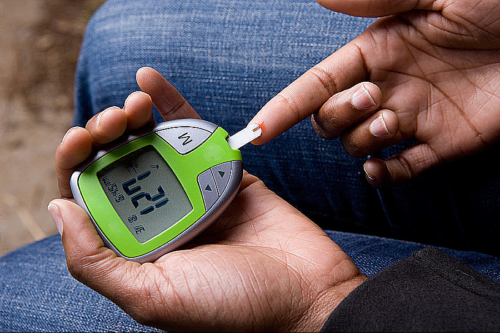Diabetes is a severe and complex disease that affects your body’s ability to produce or use insulin. The condition requires daily self-care and if complications develop, it can have a significant impact on your quality of life and can reduce life expectancy. Diabetes is the fifth deadliest disease in the U.S., and it hits the Black community especially hard:
- Approximately 4.9 million African Americans aged 20 years or older have diabetes according to the Centers for Disease Control and Prevention– but at least one-third of them don’t know it.
- The average African American born today has a 50% chance of developing type 2 diabetes in his or her lifetime.
- African Americans are at least 2.6 times more likely to have end-stage kidney disease due to diabetes
If you are living with diabetes, you know that lifestyle choices play a huge role in how healthy you are and how healthy you stay. While there is currently no cure for diabetes, you can live a fulfilling life by understanding the condition and effectively managing it. It is crucial to stick to the following regimen so that you can better manage your diabetes:
- Eat at about the same time every day to keep blood sugar levels even throughout the day.
- Eat a meal or a snack every 3 to 4 hours to help keep blood sugar levels under control. Choose snacks that are high in fiber (avocado, beans, broccoli), protein (eggs, beef sticks, cottage cheese) and healthy fats (almonds, peanut butter, sardines, tuna).
- Watch your carbs and keep the amount consistent. An eating plan that is too low in carbohydrates is not balanced and may deprive the body of essential fiber, vitamins, and minerals.
- Check your blood sugar levels every single day!
- Make sure to familiarize yourself with the recommended blood glucose range. You’ll know medications are working if blood glucose readings fall within the recommended range. Generally speaking, a blood sugar reading before meals of between 70 and 140 milligrams per deciliter is most desirable.
- Find out from your healthcare provider how low or high blood sugar can go before you need to take action. According to the American Diabetes Association for many people, blood sugar is too low below 70 mg/dL and too high above 200 mg/dL. Make sure you know the signs of hyperglycemia (high blood sugar) and hypoglycemia (low blood sugar) and how to treat either condition.
- Consider switching medications. Certain diabetes medications might not work for you. And sometimes these prescribed meds lose effectiveness after a few months or even years. If your blood sugar level begins to get wonky, don’t be afraid to have a chat with your physician about trying other drugs to get your insulin under control again. Remember, diabetes is a progressive condition, meaning, it continues to change over time as a patient’s insulin production steadily declines. The dose and type of pills most patients use to control the disease may need to be adjusted to reflect these bodily changes.
- Stick with one pharmacy. If possible, use the same pharmacy for all prescriptions. By having a complete record of all medications, the pharmacist can alert you, the patient, and his healthcare providers to possible interactions.
- See your doctor on a regular basis, and inform them of any changes in your blood sugar, or any new symptoms or medication side effects you may notice.
- Did you overeat, missed your walk, or didn’t check your blood sugar? With countless diabetes to-do’s, it’s easy to slip up. Rather than beating yourself up for yesterday’s mishaps, misadventures, or didn’t-do’s, take the opportunity to learn from your past actions as you seek to improve your mess-ups for the future!











